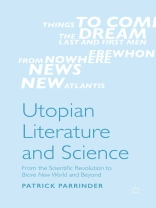Scientific progress is usually seen as a precondition of modern utopias, but science and utopia are frequently at odds. Ranging from Galileo’s observations with the telescope to current ideas of the post-human and the human-animal boundary, this study brings a fresh perspective to the paradoxes of utopian thinking since Plato.
Зміст
Preface
Acknowledgements
1. Introduction
PART I: SCIENCES OF OBSERVATION AND INTERVENTION
2. Beyond the Telescope: From Astronomy to (Dystopian) Fiction
3. A Sylph under the Microscope: Science and Romance
4. Satanism and Genetics: Haldane’s Daedalus and Its Begetters
PART II: THE HUMAN ANIMAL
5. Eugenics, Utopia, Eudemonics: Bellamy, Galton and Morris
6. Strains of the Non-Human: The Coming Race, A Crystal Age, Erewhon
7. Gorilla Warfare: Darwin, Freud, and the Stone Age Romance
8. From Human to Animal: Wells and Kafka
PART III: MODERN UTOPIAS AND POST-HUMAN WORLDS
9. War is Peace: Conscription and Mobilisation in the Modern Utopia
10. Towards the Singularity? ?apek’s R.U.R. and its Times
11. Olaf Stapledon and the Shape of Things to Come
12. The Expulsion of the Poets
Notes
Bibliography
Index
Про автора
Patrick Parrinder is a leading authority on H.G Wells and his book Shadows of the Future won the 1996 University of California Eaton Award. He is author of Nation and Novel (2006) and General Editor of the ongoing 12-volume Oxford History of the Novel in English. A Fellow of the English Association, he is Emeritus Professor of English at the University of Reading.












